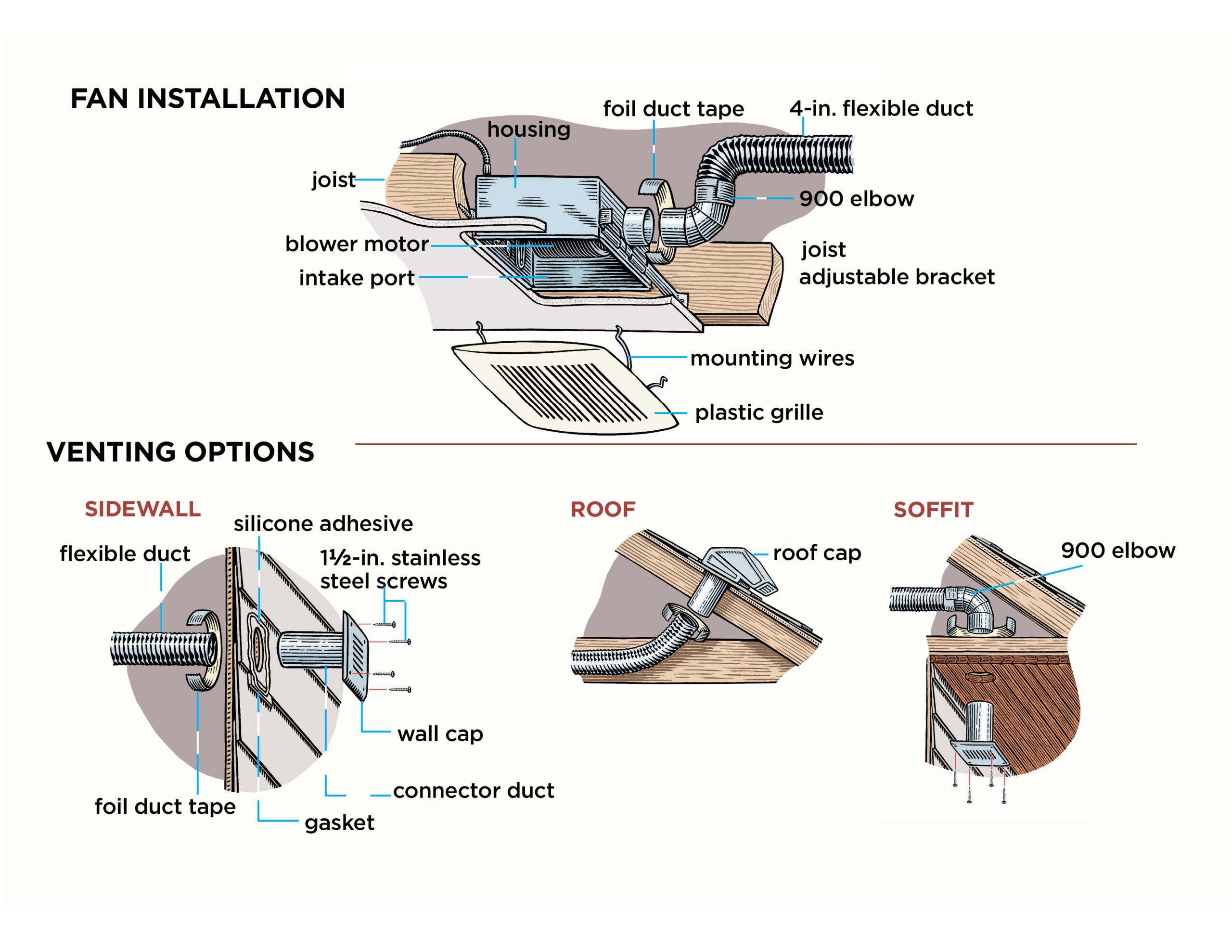Planning and Preparation

How to install bathroom vent fan with light – Before you start your bathroom vent fan with light installation, it’s important to gather the right tools and materials. You’ll need a screwdriver, a drill, a level, a tape measure, a utility knife, and some caulk. You’ll also need to choose the right vent fan and light fixture for your bathroom. Consider the size of your bathroom, the amount of moisture it produces, and the style of your décor when making your choices.
So, you’re looking to install a bathroom vent fan with light? It’s not rocket science, but hey, who needs to be a rocket scientist when you can download free fire wallpaper and get your daily dose of adrenaline? Anyway, back to the fan.
Make sure you cut the right size hole in the ceiling, wire it up, and seal it up. Easy peasy lemon squeezy.
Choosing the Right Location
Once you have your tools and materials, you need to choose the right location for your vent fan and light fixture. The best place to install a vent fan is in the ceiling, near the shower or tub. This will help to remove moisture from the air and prevent mold and mildew from growing. The light fixture can be installed anywhere in the bathroom, but it’s important to make sure that it’s not too close to the vent fan, as this could cause the light to flicker.
Installing a bathroom vent fan with light can be a bit of a hassle, especially if you’re not sure what you’re doing. But don’t worry, I’ve got you covered. If you’re looking for a simpler solution, you can also opt for a ductless bathroom exhaust fan with light.
These fans don’t require any ductwork, so they’re much easier to install. Once you’ve got your fan, follow these steps to get it up and running in no time.
Electrical Wiring and Installation

Before starting any electrical work, make sure you have the proper tools and safety gear. You’ll need a screwdriver, wire strippers, electrical tape, and a voltage tester. You should also wear safety glasses and gloves.
First, you need to identify the electrical wires that you will be connecting the fan and light to. The wires will be located in the electrical box that is mounted to the ceiling. The black wire is the hot wire, the white wire is the neutral wire, and the green or bare copper wire is the ground wire.
Next, you need to strip the insulation off the ends of the wires. Be careful not to cut the wires. Once the wires are stripped, you can connect them to the fan and light. The black wire from the fan should be connected to the black wire from the electrical box. The white wire from the fan should be connected to the white wire from the electrical box. The green or bare copper wire from the fan should be connected to the green or bare copper wire from the electrical box.
Once the fan and light are connected, you can turn on the power and test them. The fan should start spinning and the light should turn on. If the fan or light does not work, check the connections to make sure they are secure.
Mounting and Ventilation: How To Install Bathroom Vent Fan With Light

The vent fan and light fixture need to be securely mounted to the ceiling or wall. Follow the manufacturer’s instructions for the specific model you are installing. Once the fan and light are mounted, you will need to connect the vent fan ductwork to the outside vent. This can be done using flexible or rigid ducting. Flexible ducting is easier to work with, but rigid ducting is more durable. Whichever type of ducting you choose, make sure to seal all of the joints with duct tape to prevent air leaks.
Types of Vent Fan Ducting, How to install bathroom vent fan with light
There are two main types of vent fan ducting: flexible and rigid. Flexible ducting is made of a thin, flexible material, such as aluminum or plastic. It is easy to work with and can be bent around corners. However, flexible ducting is not as durable as rigid ducting and can be easily crushed or punctured. Rigid ducting is made of a thicker, more durable material, such as metal or plastic. It is more difficult to work with than flexible ducting, but it is more durable and less likely to be crushed or punctured.
Installing Vent Fan Ducting
To install vent fan ducting, first measure the distance from the vent fan to the outside vent. Cut the ducting to the desired length and attach it to the vent fan using a duct connector. Then, run the ducting through the attic or crawlspace to the outside vent. Secure the ducting to the outside vent using a vent hood. Finally, seal all of the joints with duct tape to prevent air leaks.